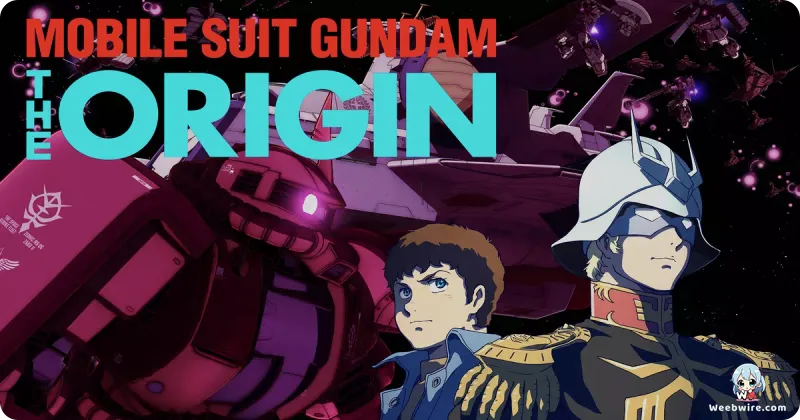Inside the Definitive Retelling: Essential Production Secrets That Shaped Mobile Suit Gundam: The Origin

Mobile Suit Gundam: The Origin is far more than a mere prequel; it represents a comprehensive, curated re-examination of the Universal Century’s foundational narrative. This project was spearheaded by franchise co-creator Yoshikazu Yasuhiko. As the original character designer and animation director for the 1979 series, Yasuhiko’s return elevates the 2015 OVA from a standard adaptation to a definitive, authoritative version of the saga, correcting and expanding upon the source material with unique insights only an original visionary could possess.
This six-episode feature-length OVA series meticulously adapts the prequel material from Yasuhiko’s manga, focusing entirely on the tragic political genesis of two key figures: Casval Rem Deikun, who transforms into the legendary antagonist Char Aznable, and his sister Artesia Som Deikun, destined to become Sayla Mass.
The Definitive Origin of the Red Comet
A standout element of The Origin's production is its profound commitment to fleshing out the 'Red Comet' himself. While the original 1979 broadcast only hinted at Char’s deep-seated connection to the Zabi family and his overarching motivations, this retelling dedicates its entire narrative focus to detailing his calculated revenge plot. The OVA meticulously chronicles Casval’s childhood, the political maneuvering that culminated in the assassination of his father, Zeon Zum Deikun, and his eventual infiltration of the Zabi military machine. This exhaustive exploration into Char’s early life, schooling, and political awakening provides crucial emotional and historical context largely absent from the initial anime.

Yasuhiko deliberately structured the OVA as a tragic political thriller, delaying the iconic Mobile Suit combat which characterized the latter part of the manga adaptation to prioritize essential character development and intense political intrigue.
Mechanical Revisions and Legacy Casting
The series also functions as a sophisticated 'director's cut' for the Universal Century’s revered mechanical designs. While respectfully preserving the spirit of Kunio Okawara’s initial concepts, Yasuhiko implemented subtle yet impactful revisions to iconic mobile suits. For instance, the Zaku II, the Zeon military’s workhorse, received both aesthetic and functional refinements. Notably, the machine gun carried by the Zaku in The Origin was deliberately modeled after historical World War II-era German military firearms, a choice intended to anchor the Zeon forces in a more tangible, realistic military aesthetic, thus reinforcing the core theme of the space-set military drama.
Similarly, the RX-78-02 Gundam, instantly recognizable, boasts new panel lines, revised vent placements, and modular weapon systems, reflecting a modern, high-detail approach to mecha design that distinguishes it from its 1979 predecessor while ensuring seamless continuity.
Furthermore, The Origin achieved an incredible feat in commitment to continuity through legacy casting. Despite the passage of decades, the production successfully secured the return of the two defining Japanese voice actors: Shuichi Ikeda as Char Aznable and Tōru Furuya as Amuro Ray. The reinstatement of these legendary performers was critical, ensuring the preservation of the sonic continuity and the fierce emotional resonance that defines their enduring rivalry. For dedicated fans, hearing the original voices, even while portraying younger versions of the characters, forged an immediate and potent link to the franchise’s origins, cementing The Origin as a true canonical expansion rather than a mere reboot. This masterful creative decision underscores the deep respect the production team held for the foundational pillars of the Gundam universe.
The Score: Blending Nostalgia and Modernity
Finally, the musical score by Takayuki Hattori weaves another layer of fascinating trivia. Hattori skillfully incorporated and grandly re-orchestrated several classic musical themes from the 1979 series, integrating these powerful musical Easter eggs seamlessly into the modern, cinematic score. These motifs provide potent moments of nostalgia, directly linking the OVA’s political drama to the impending climactic battles of the One Year War. This strategic blending of new and old musical identity solidifies The Origin’s unique status as both a fresh entry point and a crucial historical document of the Universal Century, demonstrating the profound rewards of allowing original creative architects to refine and deepen their foundational work nearly four decades later.
Credits
Mobile Suit Gundam: The Origin
Author
Yoshikazu Yasuhiko
Cover Art
Yoshikazu Yasuhiko
Studio
Sunrise
Publisher
Kadokawa Shoten
Producers





